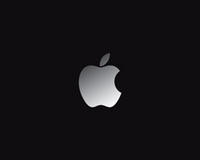By Chris Fernando | Published 08/19/2005 | Personal Tech | Unrated
What's it all about? Novinit a French company has developed the worlds first TDA or Tactile Digital Assistant.
The TDA is based on touch-screen technology and relies entirely on your thumbs for input, which are harder to lose than a stylus.
The TDA is named Jackito and comes with two simultaneous touch points so you can operate it with your thumbs at the same time and so no need for a stylus.

Using the TDA is very easy, since you can search a database or a large address book, with just your thumbs. Using the device with your thumbs is actually much faster than a stylus well at least thats what the company claims. The device comes with a variety of features like finger-touch control, battery life, fast graphics, multitasking, real-time processing, interchangeable skins and much more.
The idea of a device like Jackito was conceived from the fact that the worlds first touch screen based PDA was already developed by a US company called Litton in 1978 for the US and German armies.
After some years Novinit pondered, "If there's a touch screen based PDA for the armies, why not for the gizmo lovers? " Arnaud de la Fouchardire of Jackito says, "The architecture chosen for Jackito focuses on user friendliness. Fingertips (as opposed to a stylus) are used as a natural device for touching the options displayed by the LCD touch screen. About 200 engineers from 10 countries for over 10 years, have worked on making this device better and $50 million has been invested in these efforts."
Seven Processors and a larger screen The Jackito runs on seven processors with full parallel-processing capabilities (two micro-controllers and five accompanying reconfigurable cores), a large 4.5 color QVGA LCD fingertip touch-screen that offers resolution of 320x240 dpi, display with landscape orientation and two SD/MMC card slots.
The TDA runs on an operating system called 3ActilOS, has 2.5 MB SRAM and 16 MB NOR Flash memory. The Jackito measures 140 x 80 x 16 mm and weighs just 150 g. It feeds on a single AA battery, which according to the company, can sustain for several weeks.
Using the touch-screen with your thumbs or index fingers means that you dont have to carry or use a stylus, keyboard or any other input device. Also Novinit says that the finger's contact area is hundred times larger than that of a stylus and a stylus exerts hundred times more pressure on the screen than a finger.
Arnaud goes on to say that, "The Jackito is not only an electronic device, but also a personal companion, supporting the three essential ingredients of a well-balanced lifestyle works productivity, personal life and edutainment. The Jackito will also come preloaded with about twenty applications, which includes games, puzzles, address book, clock, to-do list, synchronization feature, backup application, etc."
Want to buy it? Novinit hasn't yet appointed any dealers for Jackito, though as of now they plan to make all the transactions through their website. The Jackito is available for sale on www.jackito.com at a list price of 600. Novinit says that if you are interested in buying the product, you will have to order it online through their website by remitting $100 and then wait for about 90 days for the product to be delivered to you.
However, you can choose the screen type (color or monochrome), user interface, removable front cover and changeable stick-on strips of your choice.
The Jackito is entirely customizable you can choose between add-ons like internal MP3 player, FM radio, microphone, headset, Bluetooth, solar battery charger and much more at an extra cost.
According to Arnaud, they will target at "early adopters" for this product, but the product is destined for everybody because the product has all the facilities that we lack as human beings gigantic memory, vast capabilities for computation, learning, games and communications.
TDAs the way to go (or is it not?) The development of the TDA doesnt stop here in fact this is just the beginning. Novinit expects that by April 2005 it will be able to make available innovative accessories for the TDA you will be able to choose from WiFi modules, GPS, digital camera (CMOS based), micro-printer, micro-scanner, barcode reader, smart-card reader, TV module and much more.
Though TDA seems to be an in thing with all the features it talks about, there are certain things that work against the very concept of digital assistant. The Jackito doesnt come with character recognition software built-in. It means that you will have to type through the virtual keyboard on the TDAs screen if you want to enter a few important data. This is far more tedious than just scribbling a few notes on a PDA screen with the stylus and leaving the conversion part to the handwriting recognition software.
The TDA runs on an operating system called the ActilOS, which no one has even heard of before. This means that there wont be any third party applications for the TDA, at least immediately.
Moreover the product is similar to a PDA its just that the TDA can be used with the fingers / thumbs and supports landscape orientation too. Though the TDA seems promising enough, time will only tell whether it remains stable in the market. So if you want to experience the magic of TDA, logon to the Jackito's website and click on buy! * This article first appeared in www.TheCheers.org










